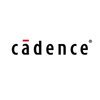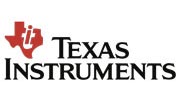Filter interviews by
Synapse Design Analog Design Engineer Interview Questions and Answers
Synapse Design Analog Design Engineer Interview Experiences
1 interview found
I applied via Referral and was interviewed in Mar 2022. There were 3 interview rounds.
(2 Questions)
- Q1. Digital Electronics basics
- Q2. Basics of VLSI and Analog Circuits
(3 Questions)
- Q1. CMOS implementation of logic gates
- Ans.
CMOS implementation of logic gates involves using complementary pairs of MOSFETs to create digital circuits.
CMOS logic gates use both NMOS and PMOS transistors to achieve low power consumption and high noise immunity.
The output of a CMOS gate is either connected to VDD or GND through a complementary pair of transistors.
CMOS gates can be cascaded to create more complex digital circuits, such as adders and multipliers.
Ex...
- Q2. Questions on op-amp working and gain.
- Q3. Amplifiers and current mirror circuits
(5 Questions)
- Q1. What are your salary expectations?
- Q2. What is your family background?
- Q3. Where do you see yourself in 5 years?
- Q4. What are your strengths and weaknesses?
- Q5. Tell me about yourself.
Interview Preparation Tips
Top trending discussions







Interview questions from similar companies

Senior Engineer Interview Questions & Answers
TDK India Private Limitedposted on 22 Apr 2021
I applied via Naukri.com and was interviewed in Oct 2020. There were 4 interview rounds.
Interview Questionnaire
1 Question
- Q1. I can not disclose the questions but definitely it was a level up than I expected
Interview Preparation Tips

I applied via Referral and was interviewed before Jan 2021. There were 5 interview rounds.
Interview Questionnaire
2 Questions
- Q1. Basic data structures questions from bit manipulation, trees, arrays, string
- Q2. Questions related to previous company work.
Interview Preparation Tips

Senior Engineer Interview Questions & Answers
TDK India Private Limitedposted on 23 May 2021
Interview Questionnaire
14 Questions
- Q1. 1. Why do you want to change your current job ?
- Q2. 2. What do you know about quality tools ?
- Ans.
Quality tools are techniques used to ensure quality in a product or service.
Quality control charts
Pareto charts
Fishbone diagrams
Histograms
Control charts
Scatter diagrams
Statistical process control
- Q3. What is your biggest professional achievement so far ?
- Q4. Tell my that why a histogram is used....and what is frequency and interval in histogram?
- Ans.
A histogram is used to represent the distribution of numerical data. Frequency is the number of occurrences and interval is the range of values.
Histograms are useful for visualizing data and identifying patterns.
Frequency refers to the number of times a value appears in the data set.
Interval refers to the range of values that are grouped together in the histogram.
Histograms are commonly used in statistics, finance, and...
- Q5. If we do rework of any produced part, which factors get affected by this of OEE?
- Ans.
Rework of produced parts affects the factors of Overall Equipment Efficiency (OEE).
Rework increases the time required to produce a part, reducing the availability factor of OEE.
Rework increases the number of defects, reducing the quality factor of OEE.
Rework increases the amount of scrap or waste, reducing the performance factor of OEE.
Rework can lead to increased downtime for equipment setup and adjustments, reducing ...
- Q6. What is Autonomous maintenance ?
- Ans.
Autonomous maintenance is a maintenance approach where operators take responsibility for routine maintenance tasks.
Operators are trained to perform routine maintenance tasks
Operators conduct inspections and minor repairs
Autonomous maintenance reduces downtime and improves equipment reliability
It also frees up maintenance staff to focus on more complex tasks
- Q7. Why do companies are going for having TPM ?
- Ans.
Companies are going for TPM to improve productivity, reduce downtime, and increase efficiency.
TPM helps in identifying and eliminating equipment failures before they occur
It ensures that equipment is maintained properly and in a timely manner
TPM also helps in reducing the need for emergency repairs and downtime
It improves overall equipment effectiveness and reduces costs
Companies that have implemented TPM have seen sig...
- Q8. Why do you want to relocate ?
- Q9. What is SPC, and what is Cp and Cpk ?
- Ans.
SPC stands for Statistical Process Control. Cp and Cpk are statistical tools used to measure process capability.
SPC is a method of monitoring and controlling a process to ensure it is operating within acceptable limits.
Cp is a measure of how well the process is centered between the upper and lower specification limits.
Cpk is a measure of how well the process is capable of producing within the specification limits.
Cp an...
- Q10. How to calculate OEE?
- Ans.
OEE can be calculated by multiplying Availability, Performance, and Quality percentages.
Calculate Availability by dividing Operating Time by Planned Production Time.
Calculate Performance by dividing Actual Production by Maximum Production.
Calculate Quality by dividing Good Units by Total Units Produced.
Multiply Availability, Performance, and Quality percentages to get OEE.
- Q11. What ardvthe major losses that affects OEE?
- Ans.
Major losses affecting OEE include availability, performance, and quality losses.
Availability losses occur when equipment is not running due to breakdowns, changeovers, or lack of materials.
Performance losses occur when equipment is running below its maximum speed or efficiency.
Quality losses occur when defective products are produced and need to be scrapped or reworked.
Other losses may include startup and shutdown los...
- Q12. What is IATF stands for and what is its current revised name ?
- Ans.
IATF stands for International Automotive Task Force and its current revised name is IATF 16949:2016.
IATF stands for International Automotive Task Force
Its current revised name is IATF 16949:2016
- Q13. What is capacitor and where it is being used ?
- Ans.
A capacitor is an electronic component that stores electrical energy in an electric field. It is used in various electronic circuits.
Capacitors are used to filter out noise and stabilize voltage in power supplies.
They are used in timing circuits, oscillators, and filters.
Capacitors are also used in audio equipment to filter out unwanted frequencies.
They can be found in electronic devices such as TVs, computers, and sma...
- Q14. Why do you prefer working in production dept.?

Analog Design Engineer Interview Questions & Answers
Cadence Design Systemsposted on 5 Jan 2025
I applied via Campus Placement and was interviewed in Dec 2024. There were 2 interview rounds.
Asked about Network theory
(2 Questions)
- Q1. Asked about electrical questions
- Q2. Does not remember
Interview Preparation Tips

I appeared for an interview before Feb 2023.
Practice on hackerrank, they send hackerrank link for screening round.
(1 Question)
- Q1. C, os, embedded questions
(1 Question)
- Q1. C, data structures,os
(1 Question)
- Q1. Previous jobs, salary discussion, relocation
Interview Preparation Tips

I applied via Referral and was interviewed in Sep 2023. There were 4 interview rounds.
(2 Questions)
- Q1. Find the length of longest common subsequence in given strings.
- Ans.
The length of the longest common subsequence in given strings is found using dynamic programming.
Use dynamic programming to find the length of the longest common subsequence.
Compare characters of the strings and build a matrix to store the lengths of common subsequences.
Traverse the matrix to find the length of the longest common subsequence.
- Q2. A basic DFS based graph question.
Write the algorithm for topological sorting.
(2 Questions)
- Q1. Basic system design questions.
- Q2. Explain CAP theorem.
- Ans.
CAP theorem states that in a distributed system, it is impossible to simultaneously guarantee consistency, availability, and partition tolerance.
Consistency: All nodes in the system have the same data at the same time.
Availability: Every request gets a response, even if some nodes are down.
Partition Tolerance: The system continues to operate despite network partitions.
In a distributed system, you can only achieve two o...
(1 Question)
- Q1. Explain your previous projects .
Skills evaluated in this interview

(2 Questions)
- Q1. What is VLSI design cycle ?
- Ans.
VLSI design cycle is the process of creating integrated circuits by going through various stages from design to fabrication.
VLSI design cycle involves stages like specification, design, verification, synthesis, and fabrication.
It starts with defining the requirements and specifications of the integrated circuit.
Design phase includes logic design, circuit design, and physical design.
Verification ensures that the design ...
- Q2. FIFO Pipeline depth calculation
(1 Question)
- Q1. Verilog code debug question
Interview Preparation Tips
Skills evaluated in this interview

I applied via Approached by Company and was interviewed in Feb 2022. There was 1 interview round.
(1 Question)
- Q1. Modem related like Tx power LNA camping issues debug Few data scenarios
Interview Preparation Tips

I applied via Naukri.com and was interviewed in Sep 2021. There were 3 interview rounds.
Interview Questionnaire
2 Questions
- Q1. String Reversal
- Q2. Bit manipulation
Interview Preparation Tips
Synapse Design Interview FAQs
Tell us how to improve this page.
Synapse Design Interviews By Designations
- Synapse Design Project Engineer Interview Questions
- Synapse Design Physical Design Intern Interview Questions
- Synapse Design Analog Design Engineer Interview Questions
- Synapse Design Lead Engineer Interview Questions
- Synapse Design Lead Staffing Specialist Interview Questions
- Synapse Design Physical Design Engineer Interview Questions
- Synapse Design Dft Design Engineer Interview Questions
- Synapse Design Senior Verification Engineer Interview Questions
- Show more
Interview Questions for Popular Designations
- Analog Layout Engineer Interview Questions
- Design Engineer Interview Questions
- RTL Design Engineer Interview Questions
- Design Engineer II Interview Questions
- Mechanical Engg. Design Interview Questions
- Senior Design Engineer Interview Questions
- Electrical Design Engineer Interview Questions
- Layout Design Engineer Interview Questions
- Show more
Interview Questions from Similar Companies
|
Physical Design Engineer
48
salaries
| ₹4 L/yr - ₹15.1 L/yr |
|
Senior Engineer
42
salaries
| ₹8 L/yr - ₹22 L/yr |
|
Project Engineer
32
salaries
| ₹3 L/yr - ₹10.9 L/yr |
|
Design & Verification Engineer
28
salaries
| ₹5 L/yr - ₹11.7 L/yr |
|
Senior Physical Design Engineer
18
salaries
| ₹10 L/yr - ₹27.5 L/yr |

Qualcomm

TDK India Private Limited

Molex

Synopsys
- Home >
- Interviews >
- Synapse Design Interview Questions >
- Synapse Design Analog Design Engineer Interview Questions









